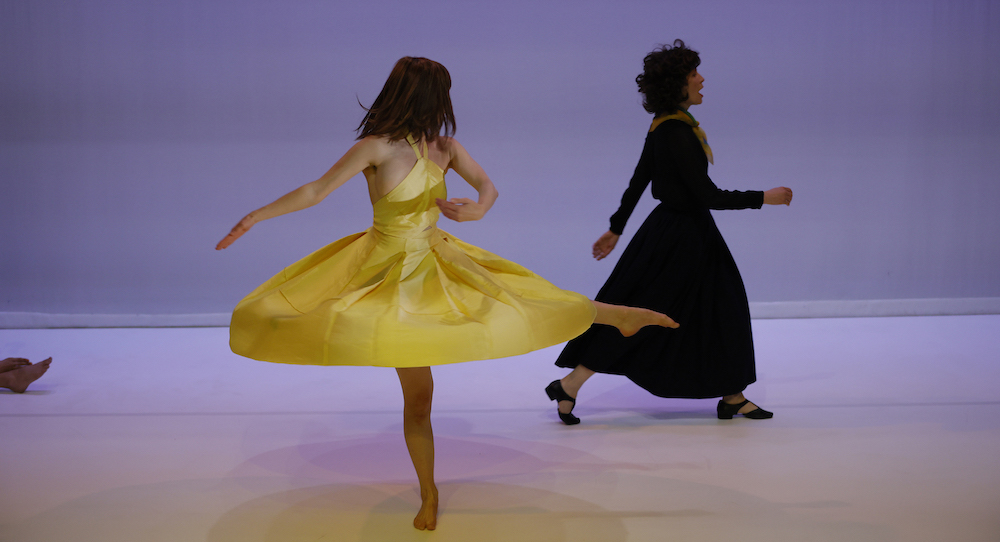Guild Theatre, Melbourne.
2 October 2024.
The arcs of narrative and the more figurative trajectories of dance can make for troublesome geometry; not least because dancers are rarely great actors. It requires a deft manipulation to bend them into shape. Molly achieves this sleight of hand, and then some.
It begins jarringly, with stilted caricature voices, phrases cut into unusual blocks. Soon, as bodies articulate to a similar count, we slide into choreographer Caroline Meaden’s disjointed rhythm. If at first we wonder who ‘Molly’ is, we soon understand that this is not about a singular identity. Indeed, as we delve deeper into the increasingly cut-up ‘story’ and the fourth wall becomes more transparent, we are reminded that what we are watching is performance. This is an act. Not simply the nine strong ensemble, but us. To some degree, we are all derivative. All rooted in stereotype.
To draw this out, Meaden mines a trove of ideas and imagery from theatre, film and art. From mad girl memes and ‘summer holiday gone wrong’ plots, to the more surreal weirdness of Lynch and the experimental flourishes of Beckett and Godard, Molly traverses kitsch, horror, absurdism and cultural critique. Deeper still, a Dadaist approach, breaking form to make form.
If that all sounds exhaustingly abstract, Meaden and her team ground the work in recognisable choreographic phrasing. Moreover, movement becomes the shape of the narrative. As Meaden says, dance is the language, theatre the frame. The net result is that Molly truly is a work of dance theatre, a play written with dancerly lines. The plot may not be linear, the pay-off less obvious, but the journey is deeply satisfying.
The richness and complexity of the work is further allowed to flourish thanks to the subtlety of the canvas. A plain stage artfully lit, with lovely slow transitions that you could easily miss but which add to a sense of eeriness and dislodgment. Same, too, for the sound design, where the sonic palette never quite settles into melody or prettiness, yet also stops short of being too abrasive.
Although we might criticise Meaden, et al for veering toward mime on occasions, and for the odd line of swallowed dialogue, these are small details, and they do not detract from the beauty and conceptual pleasure of the work.
Molly lets you dive in, as though you were a guest at her holiday house getting stripped to go for a swim. With its re-purposing of classic 20th century motifs, it also throws up a kind of shared mirror. Here, the real becomes the performative, which then becomes the real again.
We are all actors, Molly wants to remind us, even if we can’t dance.
By Paul Ransom of Dance Informa.













